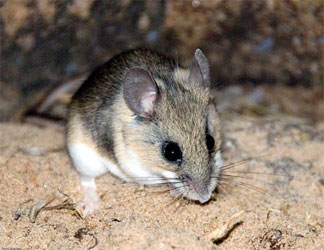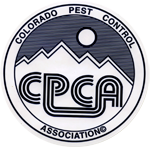Pest Library - Rodents
Deer Mouse

The genus Peromyscus contains the animal species commonly referred to as deer mice. This is a genus of New World mouse only distantly related to the common house mouse, Mus musculus. The most common species of deer mouse in the continental United States are two closely related species, P. maniculatus, and P. leucopus. In the USA, Peromyscus is the most populous mammalian genus overall, and has become notorious in the western United States as a carrier of the hantavirus.
Disease
The deer mouse came to the attention of the public when it was discovered to be the primary reservoir species for hantavirus. A recent study in British Columbia, of 218 Deer mice showed that 30% were seropositive for B. burgdorferi. Ehrlichiosis, babesiosis, and bubonic plague are also carried by the deer mouse.
House Mouse

The house mouse (Mus musculus) is a small rodent, a mouse, one of the most numerous species of the genus Mus. As a wild animal the house mouse mainly lives associated with humans, causing damage to crops and stored food. The house mouse has been domesticated as the pet or fancy mouse, and as the laboratory mouse which is one of the most important model organisms in biology and medicine It is by far the most commonly used genetically altered laboratory mammal.
House mice thrive under a variety of conditions: they are found in and around homes and commercial structures as well as in open fields and agricultural lands. House mice consume and contaminate food meant for humans, pets, livestock, or other animals. In addition, they often cause considerable damage to structures and property. They can transmit pathogens that cause diseases such as salmonellosis, a form of food poisoning.
Mice and Humans
House mice usually live in proximity to humans, in or around houses or fields. Originally native to Asia (probably northern India), they spread to the Mediterranean Basin about 8000 BC, only spreading into the rest of Europe around 1000 BC.[18] This time lag is thought to be because the mice require agrarian human settlements above a certain size. They have since been spread to all parts of the globe by humans. Many studies have been done on mouse phylogenies to reconstruct early human movements. For example one study showed a previously unsuspected early link between Denmark and Madeira on the basis of the origin of the Madeiran mice.
An individually ventilated and sealed cage for laboratory mice. House mice can transmit diseases, and can damage food and food packaging. Some of the diseases the house mouse carries can be deadly. Here are some of the diseases the house mouse can transmit: Murine typhus, Rickettsialpox, Tularemia, and the Bubonic plague. These mice can be very dangerous to people if they contaminate anything in their houses, especially food. It is also possible for wild house mice to transmit rabies, therefore a wild house mouse should never be handled. They can also cause substantial damage when feeding on grain. It is thought that house mice were the primary reason for the taming of the domestic cat. Various mousetraps have been developed to catch mice. Generally, rats are more harmful to humans than mice.
The first written reference to mice kept as pets occurs in the Erya, the oldest extant Chinese dictionary, from a mention in an 1100 B.C. version. Human domestication led to numerous strains of "fancy" or hobby mice with a variety of colours and a docile temperament. Domestic varieties of the house mouse called "feeder" mice are also used as food for some carnivorous pet reptiles, arthropods and fish. Mice bred for this purpose are genetically identical to other domestic mice, and can be kept as pets themselves.
Control
Identify harbourages, effect proofing to doors and holes in building fabric. identify defective access routes via services. Remove attractive foodstuffs, control waste and locate baits to effect control. Contact dust can be applied to ductings and harbourages only when safe to do so. break back traps can be sited and sticky boards are often used as a last resort. bait shyness and marked behavioural changes are often reported with bait box and bait shyness.
Pack Rat

A pack rat, also called a trade rat or wood rat, can be any of several species in the genus Neotoma, but most commonly the Bushy-tailed Woodrat.
Description
Pack rats are prevalent in the deserts and highlands of western United States and northern Mexico. They also inhabit parts of the eastern United States and Western Canada. Pack rats are a little smaller than a typical rat and have long, sometimes bushy tails.
Pack rats build complex nests of twigs, called "middens", often incorporating cactus. Nests are often built in small caves, but frequently also in the attics and walls of houses. Some Neotoma species, such as the White-throated Woodrat (N. albigula), use the base of a prickly pear or cholla cactus as the site for their home, utilizing the cactus' spines for protection from predators. Others, like the Desert Woodrat (N. lepida) will appropriate the burrows of ground squirrels or kangaroo rats and fortify the entrance with sticks and bits of spiny cactus stems fallen from Jumping and Teddy-bear Chollas.
In houses, pack rats are active nocturnally, searching for food and nest material. A peculiar characteristic is that if they find something they want, they will drop what they are currently carrying, for example a piece of cactus, and "trade" it for the new item. They are particularly fond of shiny objects, leading to tales of rats swapping jewelry for a stone. They can also be quite vocal and boisterous, sounding at times as if a "family rift" is taking place.
Historically, houses in or near ghost towns were typically infested with pack rats. Some species of pack rats were called "prairie flounders" by settlers. This might have occurred because the eyes of pack rats are set somewhat higher in the head than other rodents.
Control
Identify harbourages, effect proofing to doors and holes in building fabric. Identify defective drains/sewers and possible access via services. Remove attractive foodstuffs, locate perimeter baits or internal baits to effect control. Contact dust can be applied to ducting's and harbourages only when safe to do so. Live and break back traps can be sited and sticky boards are sometimes used but are are not generally effective for best control.
Vole

A vole is a small rodent resembling a mouse but with a stouter body, a shorter hairy tail, a slightly rounder head, smaller ears and eyes, and differently formed molars (high-crowned and with angular cusps instead of low-crowned and with rounded cusps). There are approximately 155 species of voles. They are sometimes known as meadow mice or field mice in North America. Vole species form the subfamily Arvicolinae with the lemmings and the muskrats.
Vole Description
Voles are small rodents that grow to 4-8 inches depending on species. They can have 5-10 litters per year. Gestation takes for 3 weeks and the young voles reach sexual maturity in a month. Needless to say, vole populations can rapidly grow from one or two to many within a very short period of time. Since litters average 5-10 young, a single vole in the yard can become 50 or more in less than a year.
Voles are commonly mistaken for other small animals. Moles, gophers, mice, rats and even shrews have similar characteristics and behavioral tendencies. Since voles will commonly use burrows with many exit holes, they can be mistaken for gophers or some kind of ground squirrel. Voles can create and will often times utilize old abandoned mole tunnels thus confusing the land owner into thinking that moles are active. When voles find their way into the home, they are readily identified as mice or young rats. In fact, voles are unique and best described as being a little bit like all the other animals they are so commonly thought to be.
Like moles, they will readily thrive on small plants. Like shrews they will eat dead animals and like mice or rats, they can live on most any nut or fruit. Additionally, voles will target plants more than most other small animals. It is here where their presence is mostly evident. Voles will readily "girdle" or eat the bark of small trees and ground cover much like a porcupine. This girdling can easily kill young plants and is not healthy for trees or other shrubs.
Voles love to eat succulent root systems and will burrow under plants or ground cover they are particularly fond of and eat away until the plant is dead. Bulbs in the ground are another favorite target for voles; their excellent burrowing and tunnelling gives them access to sensitive areas without clear or early warning. A vole problem is often only identifiable after they have destroyed a number of plants.
Range
Species of voles can be found in Europe, Asia, North Africa and North America, and tundra areas.
Diet
Depending on the species, the vole's diet consists of seeds, tubers, conifer needles, bark, various green vegetation such as grass and clover, and insects. Some species will die, however, if deprived of their main meal, Douglas Fir needles, for too long.
Predators
Many predators such as martens, raccoons, owls, hawks,falcons,coyotes, foxes, snakes, the red tailed hawk, weasels and cats eat voles. A common predator of voles is the short-eared owl as well as the northern spotted owl, the Saw-whet Owl, the barn Owl, and the Northern Pygmy Owl.
Lifespan
The average life of a vole is 3-6 months. Voles rarely live longer than 12 months. The longest lifespan of a vole ever recorded was 18 months.


